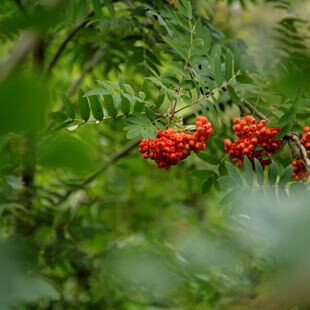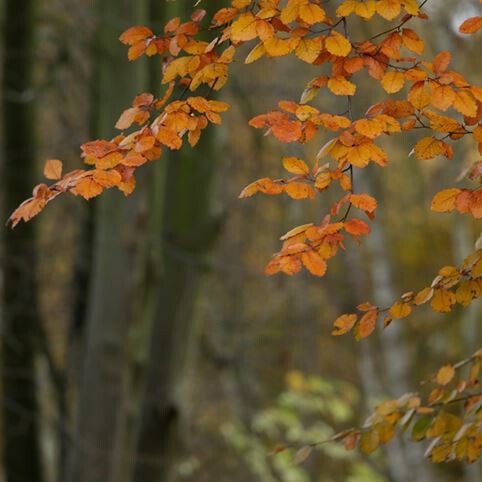Trees are a hugely varied and bountiful source of food and shelter for all sorts of wildlife, from insects to birds. They come in all shapes and sizes making them accessible features for many gardens.
Trees come in all shapes and sizes. The scale of your garden will help decide which trees you can have and how many.
Whichever type you have, or decide to plant, you’ll be giving a valuable home for local wildlife. Trees can provide food, shelter and nesting sites for a whole range of animals- from insects that make their home inside the tree, to the woodpeckers that hammer their way inside to eat them.
If you have the space, you might decide to manage trees in a small group, otherwise you may choose to stick with a single tree in a border, hedge or lawn.
Coniferous and deciduous trees can bring different features to your garden and if it’s possible having both can be a great benefit. Coniferous trees will give foliage and greenery all year round, whilst deciduous ones will give a huge variety of leaf shape and colours and well as a seasonal bounty of fruits and seeds.

Planting
Plant trees around 2-3 m apart (6-9 ft). Avoid planting within 4m (12 ft) of houses.
Trim off broken or damaged branches and roots.
If staking the tree, drive the stake firmly into the ground to a depth of between 450mm and 600mm (18ins to 2ft).
Dig a hole for each tree deeper and wider than the root ball. Backfill the hole, gently firming the soil as you go. Ensure there are no air pockets around the roots and remember to incorporate plenty of well-rotted compost.
Avoid back filling above the ‘nursery line’. This is an obvious mark at the base of the plants stem, indicating the level at which the plant was originally grown.
Cover the soil afterwards with mulch such as grass clippings, bark chippings or even old carpet and black plastic bags to keep weeds at bay.
Where necessary, tie the tree to the stake.

Maintenance
With young trees which have been staked for support, check the tree tie and slacken if necessary after each growing season. Remove the stake and tie as soon as the tree has made good root growth and becomes firmly anchored in the ground.
Whips can be encouraged to quickly grow into a tree by removing any side or lateral shoots. The head, or crown, can be encouraged to develop at a desired height by cutting the leading shoot. This will cause the tree to send out multiple branches from that point.
Trees seldom require much pruning. Any cuttings should be left beneath the tree.
Avoid trimming or cutting trees between late February and the end of August as this is the main breeding season for birds in the UK. Check for signs of nesting activity prior to cutting at any time of the year as some species can nest all year round.
Unless there is a safety risk, leave any dead wood on trees, or dead trees standing. If a tree has fallen, leave it where it is, unless it compromises safety. If it has to be moved, retain the wood in as large a piece as possible and move it a minimal distance.
Major tree work should be carried out by a professional arboriculturist. Emphasise the need to be pragmatic about the removal of dead wood.
If you have a very old tree that needs attention, it may be a vital roost for local bats. Bats are legally protected, so in case any bats are roosting in it, consult the Bat Conservation Trust.

Tools for the job
Sledge or post driver - to drive in stakes
Stakes – to support the tree
Spade – for digging the hole and backfilling
Secateurs – to trim and prune small twigs
Loppers – for trimming and pruning large twigs and branches
Tree tie – for securing trees to stakes